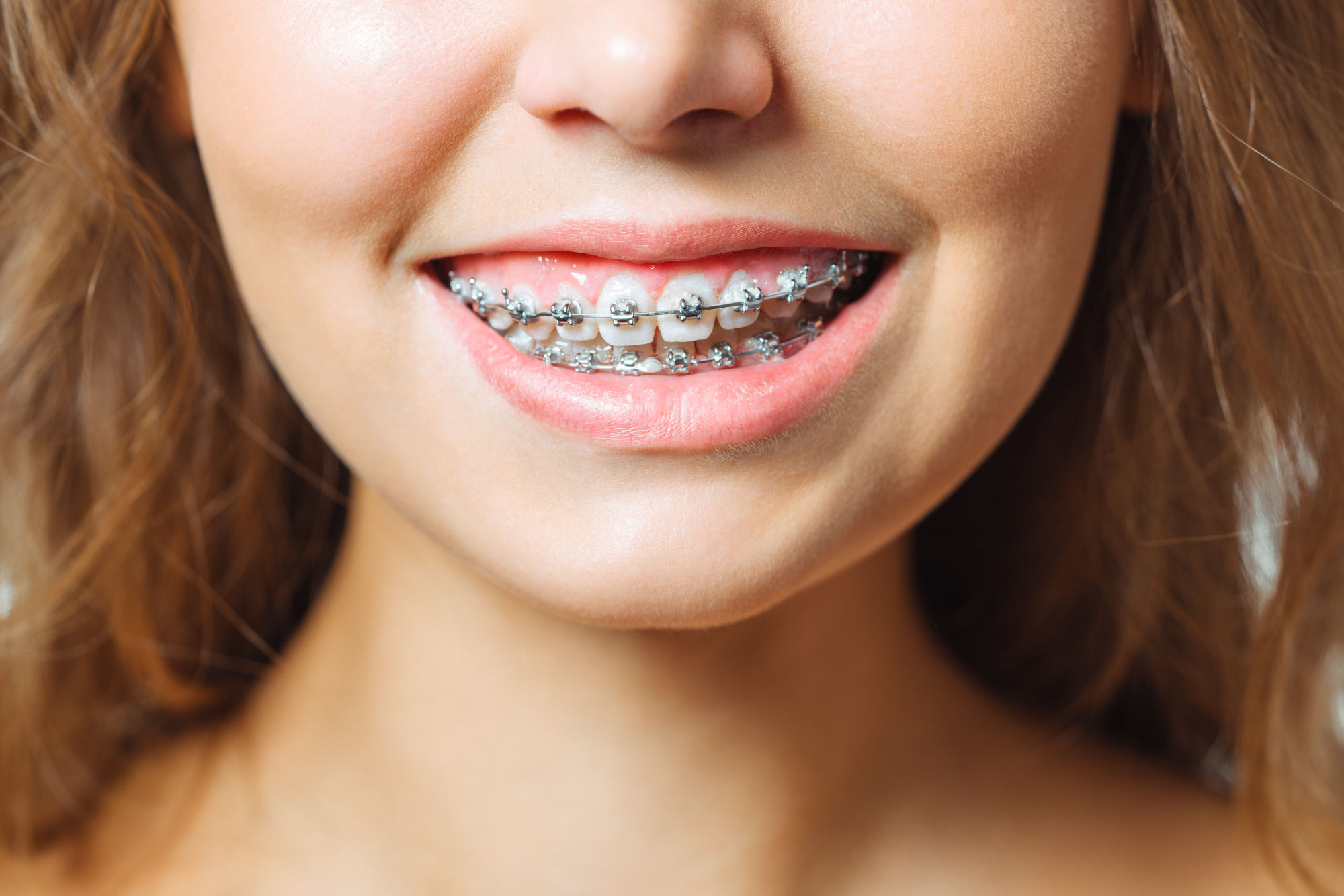Contents

The Different Types of Dental Braces: Features, Pros, and Cons
When orthodontic treatment is considered, patients are presented with several options, particularly in terms of dental braces. Whether clear, ceramic, or metal, each has its own specifics.
Discover in this complete guide how to choose the type of braces best suited to your needs, as well as possible alternatives like lingual braces or invisible aligners.
What are the characteristics of clear braces?
Made of clear resin with white Teflon wires, clear braces are appealing for their discretion. They can be used for any type of treatment, but also have some drawbacks:
- Advantages: aesthetics, discretion, versatility
- Disadvantages: higher cost, fragility, possible staining of the elastics, need for more frequent visits to the orthodontist, restrictions on hard foods, relative visibility despite transparency
If aesthetics are your priority, consider comparing this option with completely invisible appliances like custom aligners.
What are the pros and cons of metal braces?
Consisting of metal attachments (brackets) glued to the teeth and connected by an archwire, metal braces are still very common, especially among teenagers. Their progressive tightening guides the movement of the teeth, with the help of colored elastomeric ligatures and power chains to close spaces. Intermaxillary elastics are sometimes added to correct jaw discrepancies and improve the bite.
- Advantages: lower cost, fast treatment even for complex cases, precise movements, customization with colored ligatures
- Disadvantages: unaesthetic and very visible, frequent appointments, initial adjustment can be painful, restrictions on hard foods
What to know about ceramic braces?
Increasingly popular among teens and adults, ceramic braces follow the principle of metal braces but with white brackets that match the color of the teeth. While they are more discreet, they are not invisible and have certain disadvantages:
- Advantages: enhanced aesthetics, versatility (suitable for complex treatments)
- Disadvantages: higher cost, possible staining of ligatures, relative fragility, visible metal archwire (though white wires are possible at the beginning of treatment)
Comparison chart of different types of dental braces
| Features | Metal Braces | Ceramic Braces | Clear Braces (Generic Term) |
|---|---|---|---|
| Aesthetics | Very visible | More discreet | Nearly invisible |
| Strength | High | Moderate | Low |
| Comfort | Adjustment needed | Adjustment needed | Adjustment needed |
| Customization | Colored ligatures, rhodium | Limited | Very limited |
| Versatility | High | High | Moderate |
| Cost | ~$3,000 - $7,000 | ~$4,000 - $8,000 | ~$4,000 - $8,000 |
What is the cost of different types of dental braces?
The overall cost of a multi-bracket treatment ranges from $3,000 to $8,000+ depending on the complexity of the case and the type of braces chosen. On average, expect to pay for a full treatment:
- $3,000 - $7,000 for metal braces
- $4,000 - $8,000 for ceramic braces
- $8,000 - $12,000 for lingual braces
Insurance coverage for orthodontics varies, with many plans offering a lifetime maximum benefit (e.g., $1,500 - $2,500). It's crucial to check your specific plan details.
Why are dental braces used?
Dental braces are used to correct numerous orthodontic problems such as:
- Crowding, spacing, and tooth rotations
- Temporomandibular joint (TMJ) dysfunctions
- Jaw misalignments (overbite/underbite)
- Certain functional disorders (swallowing, breathing, speech)
- Impacted teeth, agenesis, and severe malpositions
What are the alternatives to braces for adults?
While braces remain a cornerstone of orthodontics, new techniques have emerged to combine efficiency and discretion, especially for adults. Among the popular options:
Lingual braces
A true technological feat, lingual braces use the same principle as classic braces but are placed on the tongue side of the teeth, making them completely invisible from the outside. While they can correct most orthodontic problems, they have some drawbacks such as high cost, initial discomfort, and more complex hygiene.
Clear aligners
The latest innovation, custom-made clear aligners like Invisalign offer near-invisibility without compromising comfort or treatment effectiveness. Removable and easy to maintain, they can correct most malpositions (90% of cases) by gradually guiding the teeth into their new position.
Conclusion
Today, the choice of dental braces has expanded considerably to meet the aesthetic expectations of patients. While metal braces remain the most affordable, ceramic and clear versions offer increased discretion at a slightly higher cost. Adults can opt for even more discreet alternatives like lingual braces or clear aligners. In any case, a personalized orthodontic evaluation will determine the most suitable solution for each case, taking into account aesthetic, functional, and financial requirements.
FAQ
What is the mechanism of action of dental braces?
Braces exert gentle, continuous forces on the teeth via a system of bonded brackets connected by an archwire. Activated at each appointment, these guided forces gradually move the teeth to their final position.
Can I remove my braces myself?
No, only an orthodontist is qualified to place and remove dental braces. Any attempt by the patient to remove them could damage the teeth and compromise the treatment result.
How to relieve pain from braces?
In case of cheek or lip irritation, orthodontic wax can be applied to protect sensitive areas. A mild pain reliever can be taken for more significant discomfort. These issues are normal at the beginning of treatment and usually subside in a few days.
Do I need to adjust my diet with braces?
It is recommended to avoid hard, sticky, or overly sugary foods to prevent dislodging the brackets and to reduce the risk of cavities. Remember to brush your teeth thoroughly after each meal and use the hygiene accessories recommended by your orthodontist.
